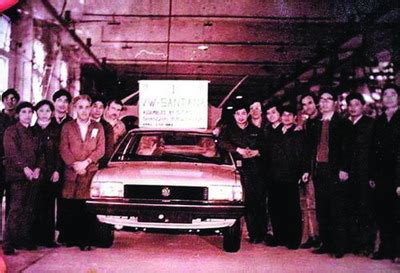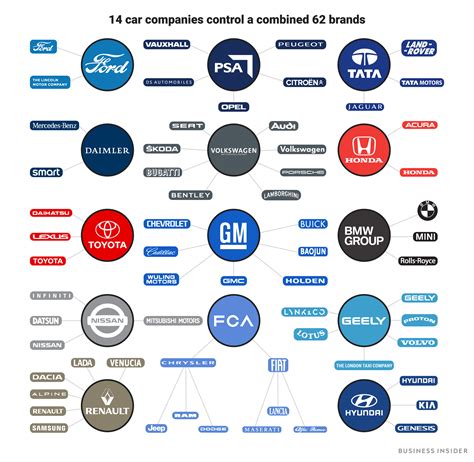Discover the early beginnings, growth, challenges, rebranding, and current position of SsangYong in the market. Learn about the brand’s journey to success.
Early Beginnings of SsangYong
Contents
SsangYong Motor Company is one of the oldest and most well-known automotive companies in South Korea, with a rich history dating back to 1954. The company was originally founded as Ha Dong-hwan Motor Workshop, and it started by producing trucks, buses, and special-purpose vehicles. In 1986, the company changed its name to SsangYong Motor Company, marking a new chapter in its history.
Under the new name, SsangYong began producing 4×4 vehicles and SUVs, and soon established itself as a leading player in the South Korean automotive industry. The company’s early years were marked by rapid growth and expansion, as it gained a strong foothold in the domestic market.
Despite facing tough competition from other well-established automakers, SsangYong was able to carve out a niche for itself and build a reputation for producing reliable and durable vehicles. The early success of the company laid a strong foundation for its future growth and development.
During this period, SsangYong also focused on establishing itself as a global brand, and began exporting its vehicles to international markets. This move further strengthened the company’s position in the industry and set the stage for its future expansion into new territories.
Expansion and Growth of SsangYong
After overcoming initial challenges, SsangYong entered a period of significant expansion and growth. The company strategically focused on building a strong presence in international markets, especially in Europe and the United States. This expansion was fueled by the introduction of new and innovative vehicle models, which received positive reception from consumers and critics alike.
Additionally, SsangYong made strategic partnerships with established automotive companies in key markets, further solidifying its position as a global player in the automobile industry. These partnerships allowed the company to leverage the expertise and resources of its partners while gaining access to new distribution channels and customer bases.
Furthermore, SsangYong prioritized research and development to continually enhance the quality, performance, and eco-friendliness of its vehicles. This commitment to innovation and continuous improvement played a pivotal role in driving the company’s growth and solidifying its reputation as a manufacturer of reliable and cutting-edge automobiles.
As a result of these efforts, SsangYong experienced a period of exponential growth, with an expanding global presence and a growing market share in various regions around the world. The company’s dedication to expansion and growth not only strengthened its position in the competitive automotive landscape but also cemented its reputation as a forward-thinking and dynamic industry player.
Challenges Faced by SsangYong
SsangYong has faced numerous challenges during its history, including financial instability, changes in ownership, and intense competition in the global automotive market. One of the biggest challenges SsangYong faced was in 2009 when it filed for bankruptcy, struggling to stay afloat amidst economic downturn and declining sales. This led to layoffs and restructuring as the company fought to regain its footing in the industry.
Another challenge for SsangYong has been the need to keep up with rapidly advancing automotive technology. As consumer demands shift towards electric and autonomous vehicles, SsangYong has had to invest heavily in research and development to keep pace with industry leaders. This has placed a significant strain on the company’s resources but has also presented an opportunity for innovation and differentiation in the marketplace.
Furthermore, SsangYong has faced challenges in terms of brand perception and international recognition. While the company has a strong presence in its home country of South Korea, it has struggled to establish a strong foothold in key global markets. Overcoming this challenge has required targeted marketing efforts, improvements in product quality, and a concerted push to expand its distribution network.
Lastly, SsangYong has had to navigate the complexities of global trade and geopolitical tensions, particularly as it seeks to export its vehicles to countries around the world. Economic sanctions, trade barriers, and fluctuating exchange rates have all created obstacles for SsangYong, requiring careful strategic planning and adaptation to ensure continued profitability and growth.
Rebranding and Innovation at SsangYong
SsangYong Motor Company, the South Korean automobile manufacturer, has undergone significant changes in recent years, particularly in terms of rebranding and innovation. In order to stay competitive in the global automotive market, SsangYong has embraced an innovative approach to product development and marketing strategies.
One of the key aspects of SsangYong’s rebranding and innovation strategy has been the introduction of new, environmentally friendly vehicle models. The company has recognized the growing demand for eco-friendly vehicles and has responded by developing electric and hybrid cars. By doing so, SsangYong has positioned itself as a forward-thinking and environmentally conscious car manufacturer.
In addition to focusing on eco-friendly vehicles, SsangYong has also embraced innovation in terms of design and technology. The company has integrated cutting-edge technology and modern design elements into its latest vehicle models, appealing to a younger and more tech-savvy audience. By doing so, SsangYong has successfully rebranded itself as a modern and innovative car company, shedding its old image and catering to the preferences of a new generation of car buyers.
Furthermore, SsangYong’s rebranding efforts have extended to its marketing and advertising strategies. The company has adopted a fresh and contemporary approach to advertising, leveraging digital platforms and social media to connect with a wider audience. SsangYong has used social media platforms to engage with customers and build a community around its brand, effectively repositioning itself in the market.
In summary, SsangYong has undergone a successful rebranding and innovation process, positioning itself as a modern, eco-friendly, and technologically advanced car company. By embracing change and actively pursuing innovation, SsangYong has secured its position as a competitive player in the global automotive industry.
Current Position of SsangYong in the Market
SsangYong Motor Company, a South Korean car manufacturer, has faced numerous challenges over the years, but the company has made significant strides in recent times to improve its position in the market. Despite the tough competition in the automotive industry, SsangYong has been focusing on rebranding and innovation to strengthen its foothold in the market.
One of the key strategies employed by SsangYong to improve its position in the market is the emphasis on product quality and reliability. The company has been working on enhancing the overall build quality of its vehicles, addressing previous issues, and ensuring that its models are equipped with cutting-edge technology and safety features.
In addition to focusing on product improvement, SsangYong has also been expanding its global presence. By diversifying its export markets and entering into partnerships with international distributors, the company has been able to increase its market reach and tap into new customer segments around the world.
Moreover, SsangYong has been investing in electric vehicle (EV) technology to align with the growing demand for eco-friendly and sustainable mobility solutions. The company’s efforts to develop electric and hybrid vehicles reflect its commitment to staying relevant in the evolving automotive landscape.











